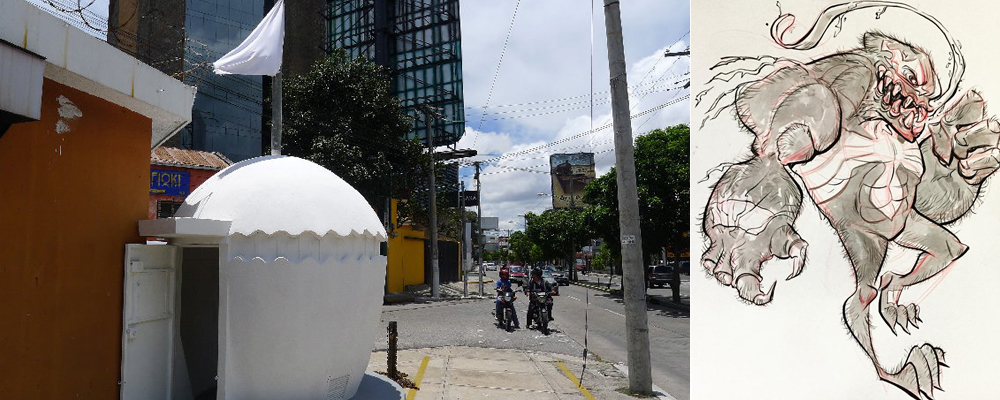LACMA’s ‘A Universal History of Infamy’ Exhibit Takes an Intellectual Approach to Contemporary Latin Art
Steve Silkin
The most challenging aspect of “A Universal History of Infamy” might not be its three locations – at LACMA, a gallery and a school. It might not even be its countertrend approach of de-emphasizing the Latino-ness of Latino and Latin-American art. It’s likely that the most challenging aspect of this ambitious exhibit is that it is “process-based.”
That’s to say, as co-curator Pilar Tompkins Rivas notes in a conversation with Chi-Young Kim on LACMA’s UnFramed site, that the exhibit didn’t begin on its opening day: It started a few years ago when the curators began discussing the show with artists that were on board for a residency at the 18th Street Arts Center, where they would all come to create the works on display at LACMA on Miracle Mile, at the Arts Center in Santa Monica and at Charles White Elementary School near MacArthur Park.
Another indication of the high-concept intellectualism of enterprise is the title, drawn from the first short story collection of the influential Argentine fabulist Jorge Luis Borges, which features re-imaginings of traditional narratives with modern and post-modern contextualization. Not for you? That’s OK, there are other people out there who want more from their art than oil on canvas or marble figures.
The three-ring exhibit features the works of 16 American Latino and Latin American artists and teams that sought to defy the standard model of what art should look like coming out of the minds and hands of those within the specific yet diverse ethnicity. It is part of the omnibus Pacific Standard Time series, with a subheading of LA/LA, signifying Los Angeles/Latin America. (Co-curator Jose-Luis Blondet said that he has been wondering – for four years! – what the slash in the title means; whether it separates or unites.)
In spite of what may seem high-level pretentiousness, it sounds like everyone had a blast. The artists came from the Lat-Am diaspora to work together and brainstorm with the curators. “Artists need time, space, and support to do what they do,” Tompkins Rivas told UnFramed. So they gave it to them. “Allowing artists the time to do research on site became an anchor for the development of many projects.
For example, the curators met with Brazil’s Naufus Ramirez-Figueroa during his residency before he had settled on his direction. They noticed a photograph that interested them – and convinced him to turn it into the performance piece he had been considering, “Heart of the Scarecrow,” which became a performance-installation piece co-produced by LACMA and the Sao Paulo Biennial – with the current Los Angeles version evolving significantly from the Brazilian show.
The Charles White exhibit, designed for the young audiences who will see it at their predominantly Latino elementary school, is subtitled “Those of This America,” and is loaded with race and class themes related to Mexican and Mexican-American life. “I hope it will function like a giant mirror,” said Vincent Ramos, an educator helming that project, “that they see themselves within the work and are empowered by the experience.”
“A Universal History Infamy” is on view at the Broad Contemporary building at LACMA Aug. 20, 2017 – Feb. 19, 2018.


